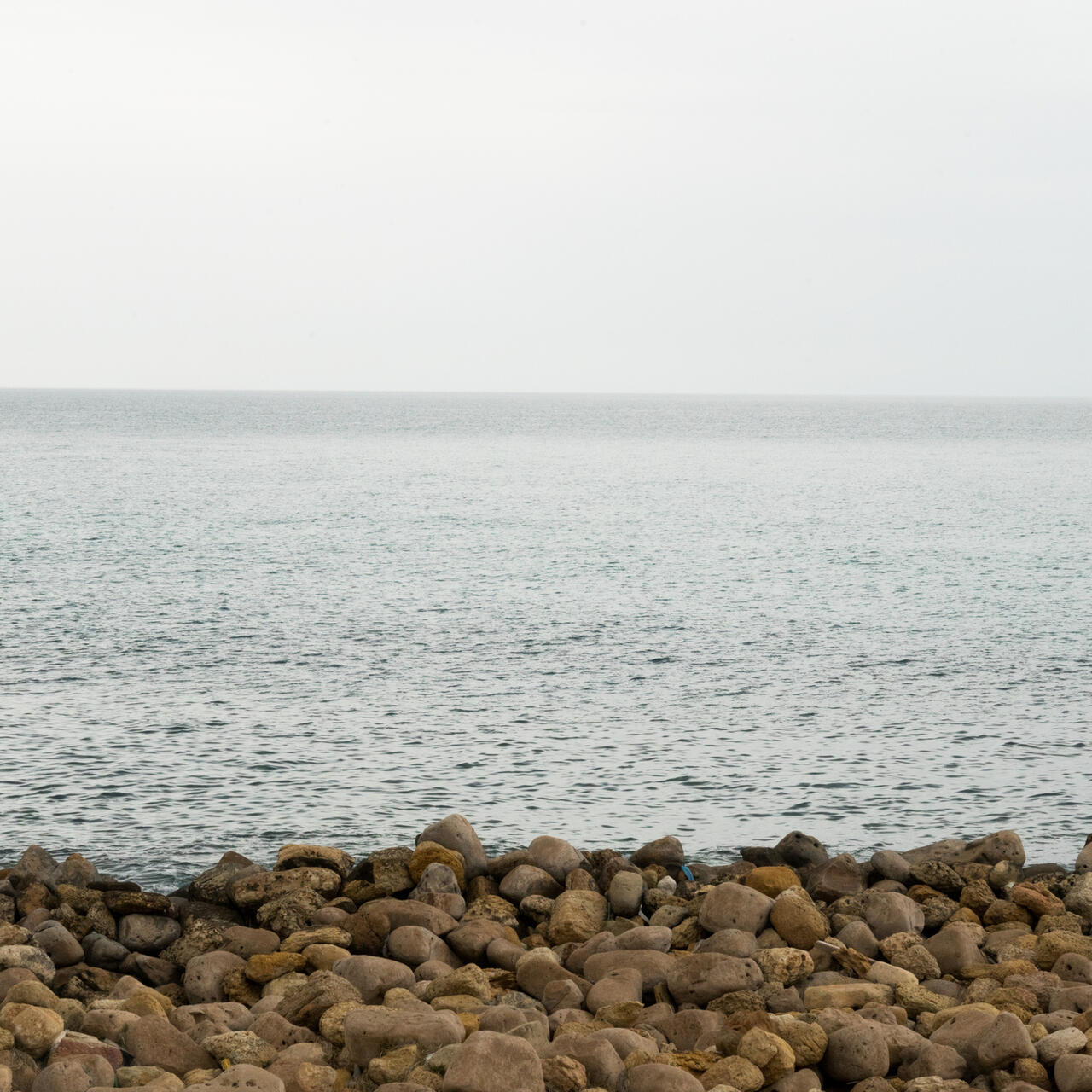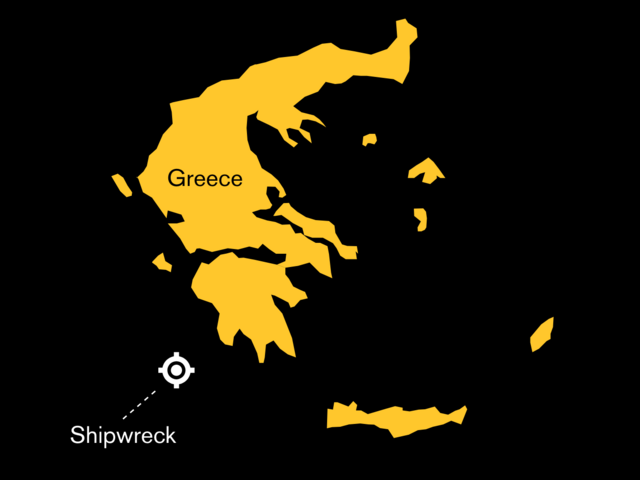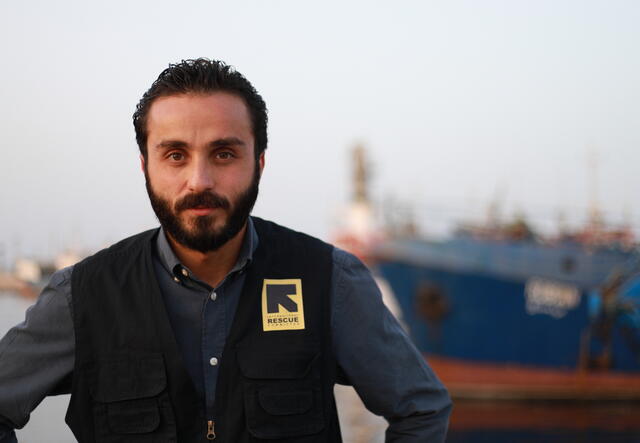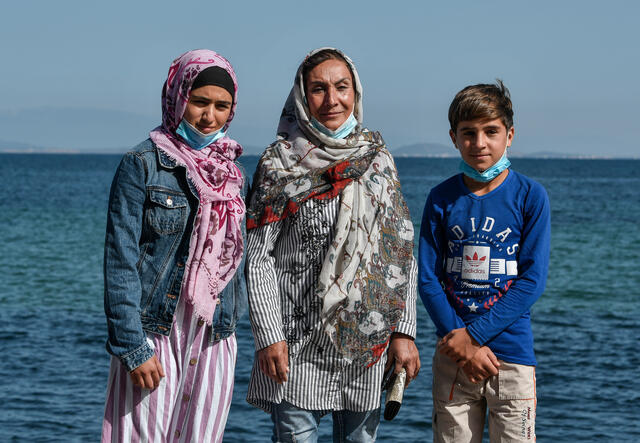
Greek shipwreck: Everything you need to know
On Wednesday, June 14, a tragic shipwreck occurred off the Greek coast. Find out more about why people seeking protection are forced to take a dangerous journey across the Mediterranean Sea.

On Wednesday, June 14, a tragic shipwreck occurred off the Greek coast. Find out more about why people seeking protection are forced to take a dangerous journey across the Mediterranean Sea.
On June 14, a ship capsized in the Mediterranean Sea, sinking off the coast of Greece. Despite a rescue mission that saved over 100 people, more than 80 have died. An estimated 500 more people are missing and feared to be dead.
Each year thousands of people make this dangerous voyage across the Mediterranean Sea. It’s all too common for these journeys to end tragically—with 2023 seeing the highest number of recorded deaths in the Mediterranean Sea in six years.
Learn more about the shipwreck in Greek waters and what world leaders can do to address the humanitarian crises in the Mediterranean Sea.
In the early hours of June 14, a fishing boat with an estimated 750 people onboard sank approximately 47 nautical miles off the coast of Pylos Greece. The vessel left Libya and was en route to Italy.
The shipwreck is one of the most devastating accidents to take place in the Mediterranean Sea in recent years. As the death toll continues to rise, this shipwreck will likely become the second deadliest ever for people seeking asylum.

Asylum seekers from Pakistan, Egypt, Syria, Afghanistan and Palestine were onboard the ship. According to international and European Union law, asylum seekers must arrive in an EU country before they can apply for asylum there.
Nine men onboard were suspected smugglers, charged with crimes related to human trafficking.
Globally, the number of people displaced has reached the staggering number of 110 million. Many of the people that attempt to make the desperate trek across the Mediterranean Sea have been driven from their homes by rising food insecurity, unemployment, and the impact of climate change, with some fleeing violence, conflict or persecution in countries like Afghanistan, Syria, Sudan or Somalia.
The vast majority of people attempting the Mediterranean crossing pass through Libya first, where they are often exposed to horrific levels of violence, including kidnapping, torture and extortion. Many people who arrive in Libya are also detained in detention centers, where the U.N. says that conditions amount to “crimes against humanity”.
“People are desperate to leave Libya because of the conditions they are living in,” says Tom Garofalo, the IRC’s country director in Libya. “Every day, they know they could be abducted, arbitrarily detained and subjected to violence and abuse. Risking their lives at sea is a last resort.”
A common route taken by many asylum seekers—called the Central Mediterranean Route—stretches from sub-Saharan Africa to North Africa, including Libya, and across the Mediterranean Sea to Europe. It is one of the world’s most dangerous migration routes.

The Central Mediterranean Sea is one of the world’s deadliest migration routes.
On April 18, 2015, the Mediterranean’s deadliest known shipwreck occurred when an overcrowded fishing boat collided off Libya with a freighter that was trying to come to its rescue. As many as 1,100 people were on board; only 28 people survived.
More recently, in February 2023, at least 94 people died when a boat carrying 200 migrants amidst harsh weather conditions sank while trying to land on the coast of Southern Italy.
These are just a small selection of a long series of preventable tragedies. Asylum seekers are only forced to take the dangerous journey across the Mediterranean because there are not enough safe and legal routes.
Even before last Wednesday’s deaths, at least 1,039 people were known to be missing from Central Mediterranean crossings this year—but the real number is likely to be far higher as many wrecks are not recorded. Overall, the International Organization of Migration has tallied more than 27,000 missing migrants in the Mediterranean since 2014.
In addition to the deadly Central Mediterranean route, the Western Mediterranean route is used by migrants seeking to reach Spain from Morocco or Algeria. The Eastern Mediterranean route is mainly used by Syrian, Iraqi, Afghan and other non-African migrants who go first to Turkey and then try to reach Greece or other European destinations.

Unfortunately, too many governments and politicians mistakenly believe that cruelty and inhumanity are the best options for establishing order at their borders. In reality, these solutions push people into the hands of smugglers to get past checkpoints, across borders and ultimately onto boats.
“Europe’s approach to migration and asylum is failing,” says Harlem Désir, IRC senior vice president, Europe. “The true crisis is not that people are asking for refuge, but the glaring lack of political will to provide it.”
EU leaders must address the ongoing crisis in the Mediterranean. Saving lives is not a crime—states must scale up search and rescue efforts, as well as coordinating with humanitarian organisations also working to save lives at sea.
They should also act in solidarity with countries of first arrival, expand legal pathways for people seeking protection, treat people who have crossed the Mediterranean with dignity and uphold the right to asylum in Europe.
“It’s imperative that EU leaders take urgent, principled action to prevent more suffering at Europe’s borders,” said Imogen Sudbery, the IRC’s senior director of Europe advocacy. “If they fail to do so, the Mediterranean will not just become a graveyard for more people seeking protection, but for its own values of human rights, dignity and equality.”
The IRC provides lifesaving medical services, cash and other essential support to countries of origin, transit and destination, including Greece, Niger, Libya and Italy.
*Last names excluded for privacy.